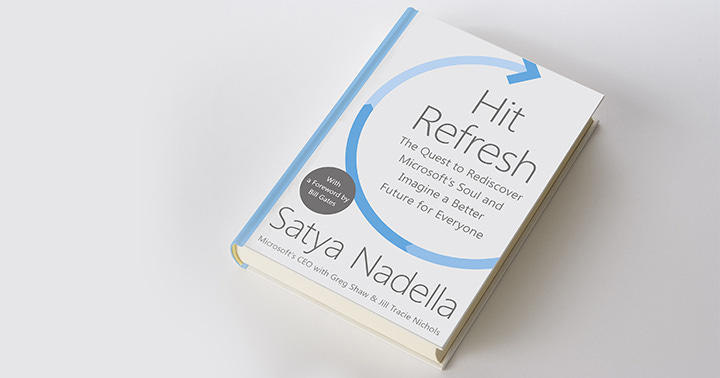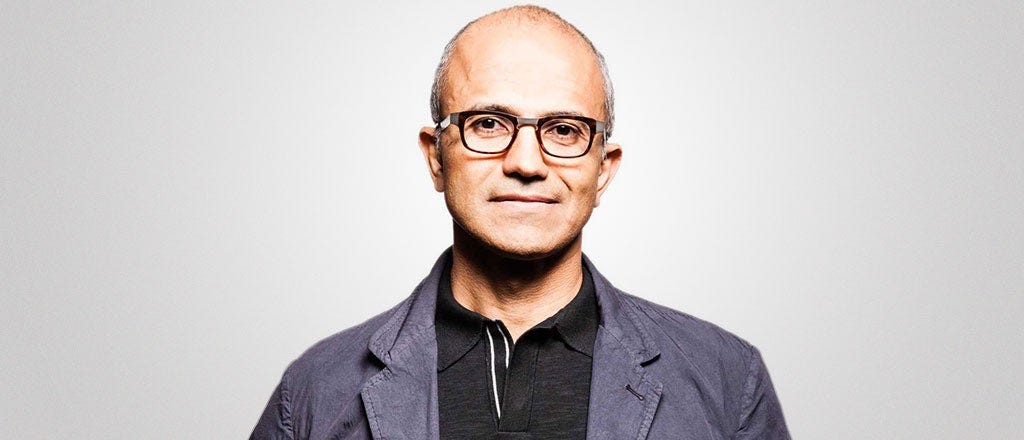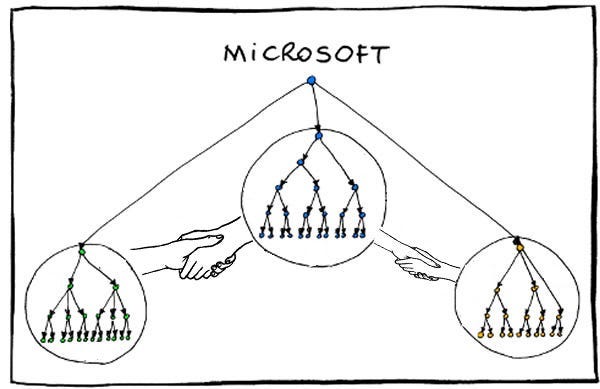We love reading books when analyzing businesses. They offer unique insights into the minds of business leaders, behind-the-scenes conversations, and the culture of a company. That’s why we aim to include them in our analysis framework, whenever available of course.
Over the past month, two of our analysts, Bouke and Mathijs, took a deep dive into Microsoft. Their work resulted in a joint report spanning over 60 pages of valuable insights. As part of their research, they both read ‘Hit Refresh’, written by Microsoft’s current CEO, Satya Nadella. In this article, we’re excited to share our key takeaways from the book with you.
1. The importance of empathy
The word empathy appears hundreds of times throughout ‘Hit Refresh’, underscoring just how central it is to Satya Nadella’s leadership philosophy. By definition, empathy is the ability to understand and share the feelings of others1; an emotional skill rarely emphasized in corporate strategy, yet critical in Nadella’s view.
At first glance, placing empathy at the heart of a business culture might seem like a personal conviction. But Nadella highlights its broader impact. Empathy fosters a deeper understanding of customer needs and aspirations, enabling companies to better tailor their products and services. It also cultivates a workplace where people feel respected, heard, and motivated; conditions that naturally fuel innovation. Beyond that, empathy strengthens employee retention and creates a stronger sense of belonging within the organization.
So, empathy isn’t just ethically admirable, it’s strategically smart. It benefits everyone involved: customers, employees, suppliers, managers, and ultimately shareholders.
As Nadella puts it in the book:
“Ideas excite me, empathy grounds and centers me.”
Of course, not every leader is naturally inclined toward an empathetic management style. That’s why Nadella didn’t just talk about empathy, but also acted on it. One of his first moves as CEO was reshaping Microsoft’s leadership team to ensure the right people were in place to drive this cultural shift.
Of course, with all these benefits in mind, you'd want to invest in companies led by empathetic leaders. Here is how empathetic leaders behave during interviews:
They speak in terms of “We” instead of “I”
They place people at the center, not KPI’s and other metrics
They listen carefully and respond with intention
They emphasize long-term relationships with customers, employees, and shareholders.
2. Adopting a growth mindset
One of the most important things we can do, both as individuals and as leaders, is to question the status quo. In a world that is constantly evolving, the facts and needs of today may no longer apply tomorrow. Without taking time to reflect, people risk falling into a fixed mindset.
As Satya Nadella puts it:
“We want to be not a group of know-it-alls, but a group of learn-it-alls.”
If you believe you already know everything but stop learning, others will soon catch up. By fostering a growth mindset and embracing lifelong learning, both individuals and companies can stay ahead of the curve.
As an investor, it’s important to not only live by these principles yourself but also look for managers who embrace a growth mindset. Those who fail to adopt this mindset are unlikely to succeed in the long term.
Nadella advises three ways to create and maintain a growth mindset:
Focus on customers
Curiosity and a genuine desire to meet every need of your customers should be at the core of your business.Seek diversity and inclusion
If you want to serve the world, your company must reflect its diversity. Include everyone in your journey, avoid discrimination, and actively challenge all forms of bias.Make sure to work as a team
There should be no silos or fiefdoms. Leaders need to break down barriers to uncover innovation in the most unexpected places. The company should feel like a family, united by a clear and compelling purpose, a shared ‘why.’
3. Don’t create enemies
In a world driven by fierce competition and the survival of the fittest, this learning might come as a surprise. Doesn’t every multinational aim to win at all costs?
According to Nadella, the answer is a clear “no”. His vision focuses on building partnerships across Microsoft’s entire ecosystem. This collaborative mindset has a magical impact. Microsoft even teams up with some of its biggest competitors. For example, in April, Microsoft announced it would adopt Google’s standard for linking AI agents. Another case in point is Microsoft’s collaboration with Meta to support the Llama 2 family of large language models on both Azure and Windows.
This approach reflects a shift from ruthless rivalry to strategic cooperation, recognizing that in today’s tech landscape, collaboration often drives greater innovation and long-term success.
This idea of avoiding unnecessary enemies goes beyond strategy, it applies just as much to personal life and everyday work within a company. Nadella consistently puts the team first, believing that every individual’s role is to strengthen and improve the group as a whole. If you excel in your work (not Microsoft’s spreadsheet application), it should always be for the benefit of the team.
To illustrate this, he draws an analogy from India’s most popular sport, cricket, saying:
“One brilliant character who does not put the team first can destroy the entire team”
Other learnings
We hope it’s clear why we value reading books about the companies we analyze so much. In our opinion, Satya Nadella deserves a great deal of credit and respect for the way he views life, approaches business, and treats people.
If you’re curious to discover what else we learned about Microsoft from ‘Hit Refresh’, be sure to check out our latest analysis of the tech giant!
If you want access to the full Microsoft analysis, we’d be honored to welcome you as a TDI member.
Have a wonderful day and happy investing.
The Dutch Investors
Oxford Languages






